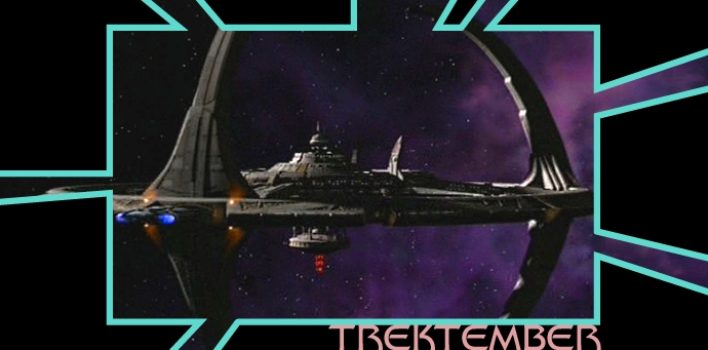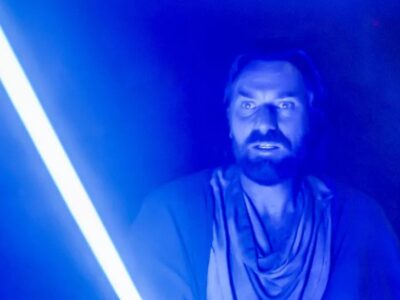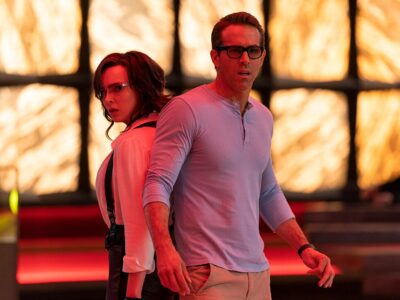Trektember: Season 4 Preview
If you just want to see the episode list, click here.
The fourth season of Trektember is upon us! If this were Star Trek: Deep Space Nine, this would be the year that Worf joined the cast, the year that the Dominion changelings infiltrated Earth, the year that the show really got good.
Here’s hoping.
Why Deep Space Nine?
DS9’s season 3 episode Explorers is the first episode of any Star Trek show that I remember watching live when it aired. I’ll have a full review of it next Monday, and while it was not the first Trek episode I saw, it was the first one I still have a memory of: sitting on the floor in my parents’ living room, watching Ben and Jake Sisko flying a solar sailer across a grainy little TV that was so static-y, it looked like the little ship was in more of a snowstorm than a starscape. We had to adjust the rabbit ears more than once during the episode, because the channel showing DS9 was on the other side of the city from our little house out in the country and also it was the dark ages.
But when the lightship hit the tachyon eddies and went to warp, it was still one of the most captivating moments in my young life; not because of the remarkable visual effects (though they were good), but because of the character development, established throughout the episode and given a visual climax as the little rickety ship hits an impossible velocity and rockets off to Cardassia.
And for my money, that’s Deep Space Nine in a nutshell: character. The Next Generation has the strongest story, Voyager has the most interesting premise, and Discovery has the best visuals (so far); but Deep Space Nine has the largest group of the most consistent, most strongly-visualized, most well-drawn, most dynamic characters of any Trek series. Every episode features an exploration of a character with real flaws, real motivations, real desires, and a unique voice; every season features major changes and growth in the main cast; and every character feels like they could step right off of the screen and come shake your hand. It’s a shame that the series never got a film, but in a way, maybe a film would’ve done a disservice to the characters; they need to feel like they’re real, and the only way to do that well is to pace their stories out over a long series of long arcs.
It’s probably why the series has long been enduring, and even venerated, in the hearts and minds of fans: the characters grabbed us by the heart and wouldn’t let go.
The Prophets
Another reason to look at Deep Space Nine is the show’s handling of religion. Most Trek series shy away from it, or hide it away in a single episode, or even cast it as the villain against which the Enterprise and her crew must prevail. Gene Roddenberry’s script for “Encounter at Farpoint” cast a godlike figure as a cosmic prankster whose capricious eye was fixed upon Picard and his crew, for instance; his similarly secular scripts for the Original Series are similarly (though perhaps more subtly) leery of religion, like when Kirk and Spock liberate the people of Gamma Trianguli VI from bondage to their god Vaal in “The Apple.” Roddenberry’s humanist views largely kept Star Trek from deeper and more real conversations about God and faith for quite a long while.
But in Deep Space Nine, Bajoran worship of the Prophets is not only respected, but validated and even proven from the very first episode. There are good followers of the Bajoran religion (Kira, Bareil, Opaka) and bad ones (Winn, Winn, and Winn). While the Prophets themselves are not perhaps the most perfect analogy for the God of the Bible, the way that the show treats Bajoran religious life allows us to investigate our own spirituality and worship, to observe our religion by contrast and reflection, and to be mindful of our interactions with the secular through new and perhaps helpful analogies.
To Boldly Stay
Deep Space Nine shook up a lot about the Star Trek formula; but perhaps none so visibly as setting the show aboard a space station instead of on a starship. But the decision to show life aboard a Cardassian-built, Bajoran-owned, Starfleet-managed outpost situated at the back door of the universe allows for some interesting conflicts, dangers, and interactions. It gives the rest of the universe a reason to come to the main cast. It gives the main cast a jumping-off place to investigate and explore.
This might be a cost-cutting measure, in that the sets which need to be built are minimized; but it also allows the characters to put down roots and see the world through their neighbors’ eyes. The series looks for ways to bring interesting people to the station, and sees the ways humans bump against and change those around us; both for better and for worse. Since we modern humans also tend to stay in the same general location for long periods of time, we can explore ourselves through this, seeing by comparison the ways we harm and help our neighbors through our worldview and actions. We can see how dynamic growth is helpful and desirable. And we can hopefully find a way to interact with those around us respectfully, for our good and for theirs.
Trektember: Season 4
Hopefully by the end of the month, you’ll have seen yourself in Sisko, Kira, Dax, and O’Brien. And also in Dukat, Garak, the Founders, and Kai Winn. Let’s go full speed ahead into the wormhole; coming along with us are some excellent writers, and we’re really excited to show you what we’ve been cooking up for this year’s Trektember. We’ll be here every weekday with a brand new article; but if you are aching for more, check out our last three seasons about The Original Series, The Next Generation, and Discovery/The Orville. Links to past and current articles are available at reelworldtheology.com/trektember.
Trektember continues rolling along tomorrow with a piece by writer Adam David Collings about Deep Space Nine‘s two-part opener, Season 1’s first and second episodes, “Emissary.”
See you then!








Pingback: Trektember: Season 4 Episode List | Reel World Theology
Pingback: Trektember: Explorers | Reel World Theology
Pingback: Trektember: Season 4 Episode List | Reel World Theology